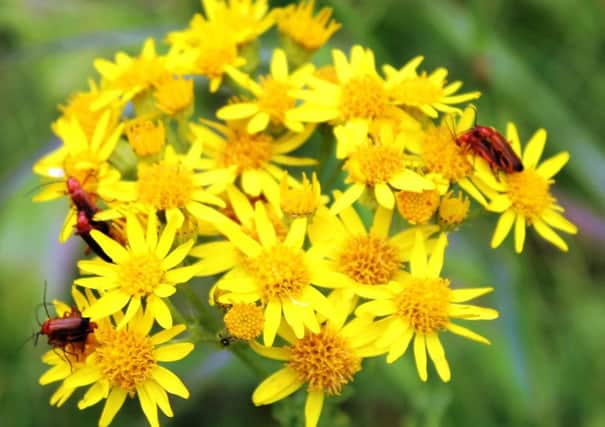Why looks aren’t everything


Ragwort can grow as high as three feet, producing big, flat-topped clusters of yellow daisy-like flowers.
It’s very pretty, but also very poisonous, particularly to cattle and horses. Thus Senecio jacobaea is hated by many a farmer and all horse-lovers..
Advertisement
Hide AdAdvertisement
Hide AdIn fact, so hated (and feared) that it is just one of only a handful of injurious weeds included in the Weeds Act (the others, for all you quiz question lovers, specifies five injurious weeds spear thistle, creeping or field thistle, broad-leaved dock and curled dock).
And the Ragwort Control Act 2003 (which amends the Weeds Act 1959), imposes a duty of responsibility on landowners to effectively control Senecio jacobaea, by preventing it from spreading onto grazing land.
Ragwort is rarely a problem in gardens but because it produces large numbers of seeds which are dispersed by the wind, it can find a home in paddocks, on rough ground and verges; in fact, just about anywhere and everywhere it’s possible for a seed to germinate.
But ragwort isn’t all bad. In fact, it plays a vital role in the life of many insects, in particular caterpillars of the Cinnabar moth, Tyria jacobaeae.
Advertisement
Hide AdAdvertisement
Hide AdWhen they eat it, they absorb alkaloids from the plant, a fact they flaunt by their black and yellow warning colours used to inform predators that it’s not a good idea to take a bite.
The red and black, day-flying adult moth is also distasteful to many potential predators. The moth’s love for ragwort means that it is used as a control for plant in countries where it has become a problem.
In fact, 30 species of invertebrate use the plant exclusively as their food source and there are another 22 species where ragwort forms a significant part of their diet.
And as if that wasn’t enough, English Nature identify a further 117 species who use ragwort as a nectar source – from solitary bees to hoverflies, moths, and some butterflies.
So ragwort isn’t all that bad – just as long as it grows in the right place.